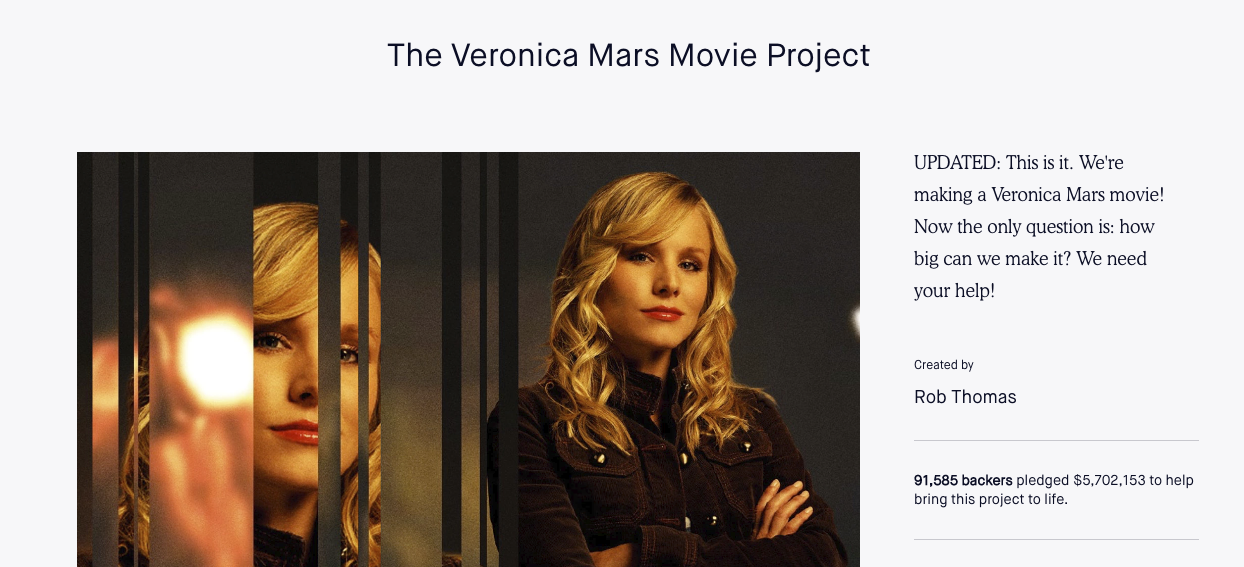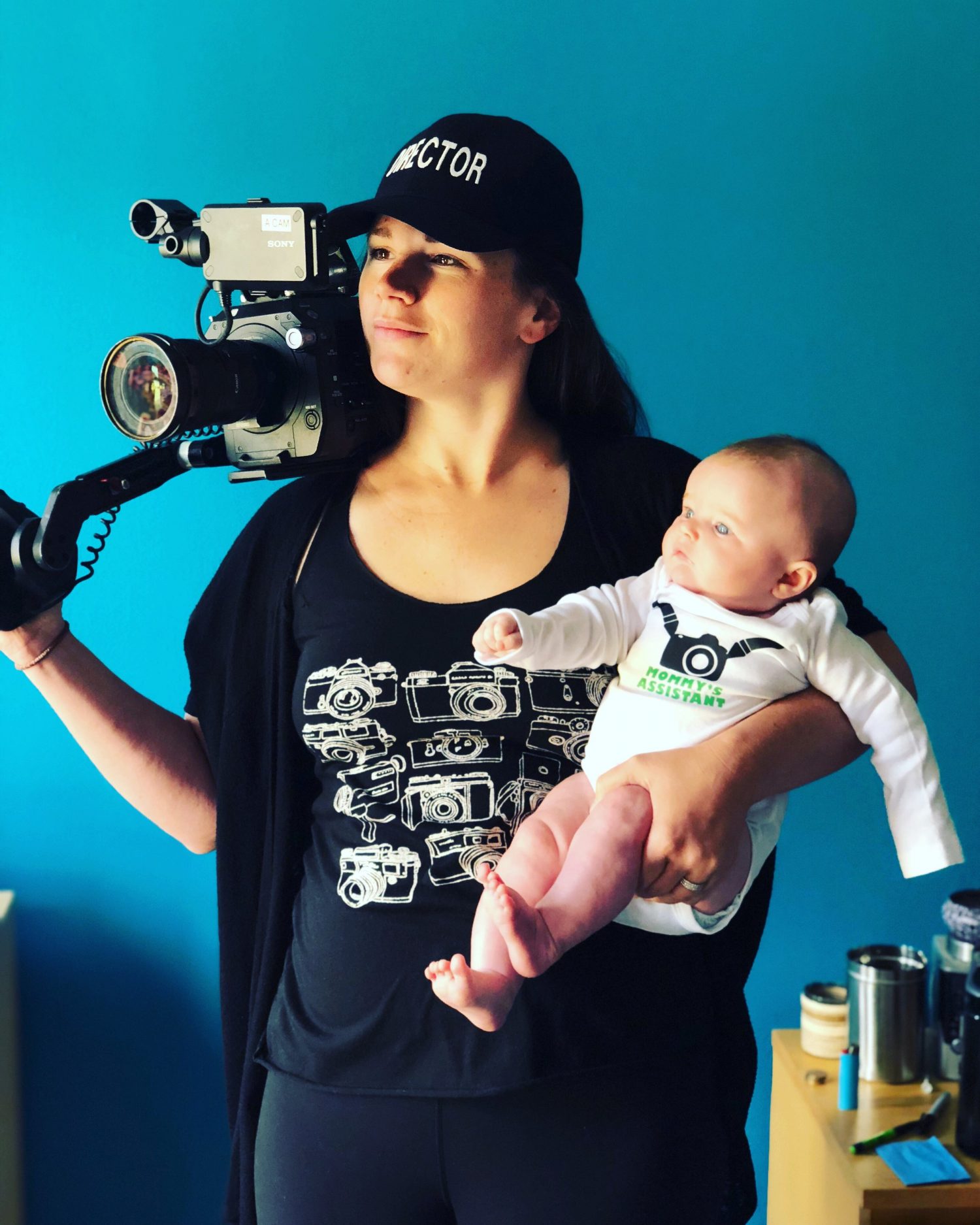How to ask for money? That’s one of the toughest parts of being an artist or an entrepreneur. I was thinking about what to write for my second blog post when I realized that I still get a lot of questions about crowdfunding from fellow artists and friends, and instead of emailing folks one by one, I thought why not write a blog post that everyone can benefit from? The topic has been written about so much but I will try to share some lessons learned from two successful crowdfunding campaigns, through which we raised about 50,000 dollars in 2013 and 2015 for our feature film She Started It with my co-founder Insiyah Saeed. More importantly, these are lessons from a regular filmmaker. We didn’t have a massive fanbase, a big team, or a lot of resources before launching the campaign. I’m adding some information relevant to 2018, as things change so fast. If you have any tips or suggestions, hit the comments below! There’s also a list of useful resources, shouting out experts such as fellow filmmaker Sarah Moshman.
Get backers before you launch
Think about your campaign as a restaurant. If it’s empty, no one will want to come in.
This is the secret that crowdfunding platforms don’t share often enough. A lot of people will say it’s all about having a great campaign and a great video. The truth is, crowdfunding has changed a lot in the last few years, and people are reaching a point of saturation. How many emails and Facebook messages do you get per week about someone’s campaign? Books, films, apps, etc. are also competing with charity, health and social justice campaigns, and technology products. On top of it, online content has exploded and it is now easier and cheaper than ever to put content out there, which means you are constantly competing for eyeballs and attention. Unless you have a massive and fervent fanbase that can get your project funded in a few days like “Veronica Mars” or a celebrity attached, the truth is reaching a crowdfunding goal requires a lot of preparation and work.
When we launched our second campaign on Indiegogo in 2015, I remember that one of the staff members gave us a piece of advice, which proved true for us and many other campaigns I’ve seen: think about your campaign as a restaurant. If it’s empty, no one wants to come in. He recommended we only share our campaign with the public once we had received 30% of funds from friends, family, and backers who had already committed to giving on the first few days. Now, I think that very few people manage to get that much committed in advance, but the goal is to try. The worst mistake you can make is launching a campaign without any funds committed. Heck, if you realize that it’s too late, I would even recommend putting some of your own money with a credit card that you can get back later (minus the fee) just so you don’t share a campaign with no traction. Because once people have shown up to your page and seen that nothing is happening, they most likely won’t come back. In our case, we had emailed in advance a lot of friends and potential backers that we had interacted with on Twitter for months, to offer them a sneak peek of our perks and ask how much they could commit on the first day. On that day we emailed everyone personally to make sure they would donate before sharing more widely.
Find your niche(s)
Your friends, family, and work colleagues have donated, and now your campaign has some momentum. You are ready to take it public and share it widely. The first thing to do is to find the communities and niches who are really invested in your topic instead of blasting the campaign to just anyone. In our case, the topic was women entrepreneurs in technology. It did not help much to hit up groups of women filmmakers, because we are all struggling to get our projects funded. You have to be really specific about who your community is, and why they might need your content. We worked in concentric circles; women entrepreneurs and women in tech first, then communities focused on female empowerment, then just technology and entrepreneurship, etc. Start with the people who are most aligned with what you are trying to do. Today, the platform Seed & Spark is really interesting for filmmakers as it really builds on that community aspect.
In our case, it was incredibly helpful to have communities of women investors and entrepreneurs share our campaign with their mailing lists because they actually were invested in our success since it completely aligned with their goals. Also, be realistic about where the money can come from. Some communities have a lot of money, some don’t. If your niche is made of people who don’t have financial means, think about how they can help you spread the word instead, and find the few key people from that community who have the financial capacity to become bigger donors on behalf of everyone else.
Getting press articles
Once all the relevant communities have been connected with and have spread the word, you need to go more global. Of course, getting written about in the news is ideal. The power of media can make a real difference. Our first campaign in 2013 really took off after we got written about in the Huffington Post, and in 2015 we got a piece in The New York Times’ blog “Women in the World” and in Inc Magazine. All this really helps for credibility beyond getting new eyeballs on your campaign, and can help friends on social media who are watching from the sidelines go from, “what are they doing”, to “wow this looks like it’s really taking off, maybe I should take a closer look”.
In our case, we were lucky that Insiyah, my co-founder, had connections and expertise due to her background at Columbia Journalism School and as a journalist herself. If you have no idea how to ask journalists to write about your project, here are some lessons that I learned, working as a reporter myself for years and getting dozens of pitch emails per day:
- Personalize. (which is true for every email.) Make a list of journalists who care about your topic, and reference their work when emailing them to show that you’ve done your research.
- Be short and to the point. Journalists receive so many pitches, they don’t have time to read a novel.
- Do the work for them. Journalists do not have time to understand why your project could be a newsworthy or interesting article. Detail how and why this is newsworthy and worth covering, so half of their work is done. (Pro tip: if you cant come up with anything, it’s probably not an interesting enough project, so take a closer look to identify what makes your project unique, relevant, and newsworthy.)
How to ask for money and for help
1. Personalize and be relentless. Sending a mass email to all your contacts might save you time, but it most likely won’t bring you a lot of donations. Make a database of all your connections, and email everyone one by one, with a tailored and personalized email. You should write a template to save time, and some great tools like Hubspot or Streak now allow you to do personalized mass e-mailing. Until people have actually said no, it’s worth emailing a few times, without getting to the point of harassing of course. It takes a few emails and sometimes a few months for someone to remember who you are, have the bandwidth to respond, and sometimes timing is everything. Keep your database updated. Nothing worse than getting an email asking you to donate after you’ve already done so. Also, remember that an online campaign is the best way to raise money offline. Some people might be able to become bigger donors if you take the time to meet them and follow up after they’ve donated, and they might introduce you to friends who can make tax-deductible donations outside of the campaign or become angel investors. Think of organizing offline fundraising parties!
2. Follow-up and build a team: people who have donated might be able to spread the word. Ping people who said, “maybe next week when I receive my paycheck”. All this requires organization and team effort. If you don’t have a team, get volunteers who care about your topic, or even hire an intern. Nowadays there is such a thing as a campaign manager, people who get hired to crowdfund, so don’t think that running things alone a few hours per day will suffice. Never forget that people are busy. You have to do the work for them.
The “Why”
I will always remember an interview we did with Danae Ringelmann, the co-founder of Indiegogo. After giving a really personal and vulnerable answer to my question “why did you start Indiegogo?” she turned the question on me and was not satisfied with my pretty generic answer. I had to become vulnerable as well and admit to myself, and to her, that seeing my mom working in the male-dominated finance industry and not getting her due, constantly battling for respect, despite being the best at her job, had been a big part of what started the feminist fire inside of me.
When you have a clear vision and a passion for what you do, people will help you. Authenticity is key. Focus on something you are really excited about, and share that passion. As soon as it comes through in the way you speak about your project, in the way you write about it, it will become a no-brainer for people to jump on the moving train.
This is also what will help you to keep going when the campaign inevitably stalls, and you are feeling desperate and hopeless (which will happen). However, only share that despair with really close friends and teammates, and only for a moment before you pick yourself back up. I remember one time feeling down about our fundraising, and telling someone at a party who had become a work friend. It was not a good move, as that person did not feel excited about my project, and I had to correct myself.
People do not want to hear about how broke you are, or how desperate you are. They want to be excited and feel like they are part of something worthy of their time and money.
You have to be your biggest advocate, at any time. Be ready to pitch to anyone you meet, answer any and all questions, no matter how tired and frustrated you get. Last but not least, the “Why” should not take over to the point that you bother everyone around you: take some time to have fun, relax, and be there for your friends as well.
Now go get that money!
Great resources on the topic:
The Crowdfunding to Build Independence course – Seed & Spark
Women Who Build Cool Stuff Give Crowdfunding Tips



Great post, Nora. Super helpful tips!
Thanks so much Doug !